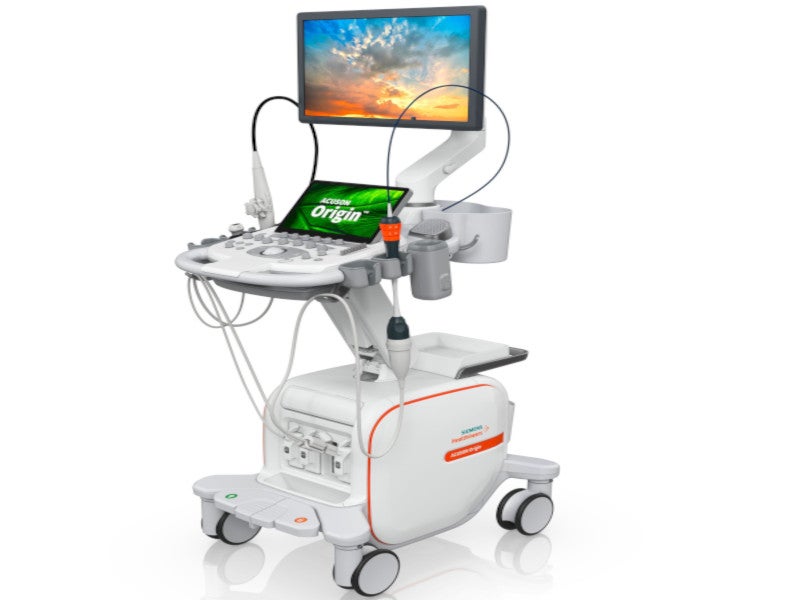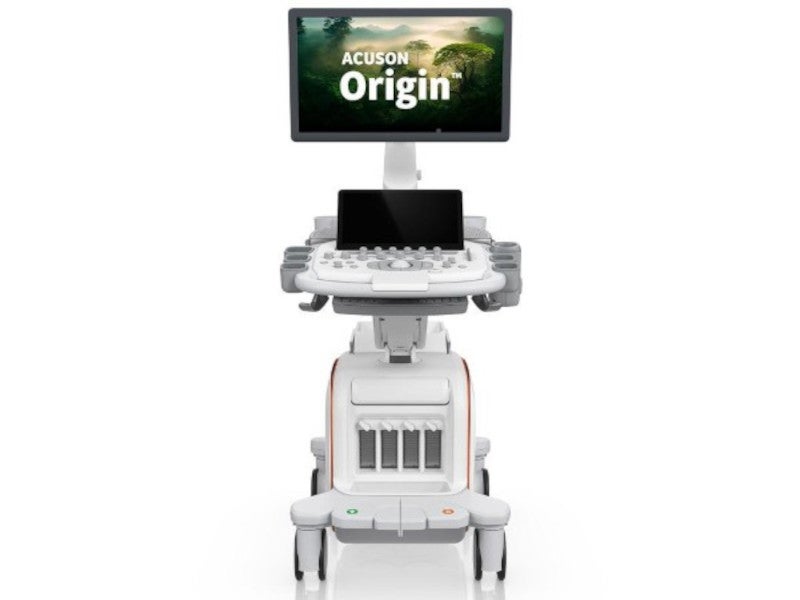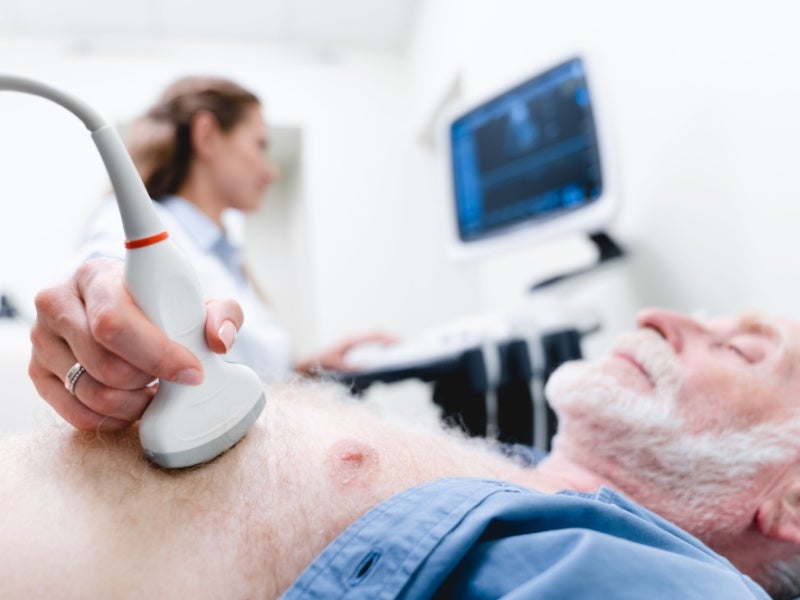The ACUSON Origin system is an AI-based ultrasound system that supports the full spectrum of cardiovascular patient care, including diagnostics, structural heart issues, vascular concerns, electrophysiological studies, and paediatric interventions.
The system is also eligible for abdominal, gynaecological, transoesophageal, vascular, adult cephalic, and peripheral vascular applications.
Developed by the medical technology company Siemens Healthineers, ACUSON Origin received clearance from the US Food and Drug Administration (FDA) in August 2024.
ACUSON Origin is available exclusively with the AcuNav Lumos 4D intracardiac echocardiography (ICE) catheter to provide advanced imaging capabilities for complex cardiac procedures.
ACUSON Origin design details
ACUSON Origin is a lightweight device, weighing 125kg and designed with a minimal footprint. It is equipped with a central locking brake for enhanced stability and mobility.
It measures 60cm wide, between 120cm and 175cm high, and between 94cm and 108cm deep. It comes with a 24-inch dual-layer LCD monitor designed by Barco, with a widescreen format of 1024 × 768 resolution, for capturing clear images and reports.
A 13.3in LCD touchscreen with the system can be tilted between 30 degrees and 60 degrees for optimal user comfort, while an integrated storage shelf allows a convenient accessory organisation. ACUSON Origin features a series of ports for transducer connections to offer ease of access.
Additionally, Kinectus, a secure, user-friendly, cloud-based connectivity platform, and teamplay Fleet, a digital health platform solution, are a few services offered with the system.
ACUSON Origin technology
The system incorporates single-crystal technology. The patented InFocus imaging of the system negates the need for traditional focal zones while the UltraArt Universal Image Processing provides customisable ultrasound imaging with a real-time quad display, allowing users to tailor their imaging preferences with ease through a single touch.
The Auto Flash Artifact suppression technology mitigates the incidence of flash and ghosting colour Doppler artefacts caused by motion, ensuring that colour Doppler imaging stays precisely aligned for an improved anatomical and haemodynamic depiction.
The technology improves colour sensitivity and reduces user interaction.
Clarify vascular enhancement imaging technology offers real-time analysis, delivering a clear resolution of vessels and enhancing the visualisation of both micro and macro vasculature by diminishing noise.
Multi-planar Reconstruction (MPR) line, simplifies the alignment and navigation across different planes within a 3D image, thereby offering a visual reference for analysis.
Dual V feature users can position the reference dot on the MPR image by viewing two different perspectives on an image simultaneously.
ACUSON Origin transducer details
The ACUSON Origin ultrasound system offers an array of 14 transducers for more precise, clear, and versatile cardiac imaging.
The range includes three 9C2 curved transducers, each with 192 elements capable of reaching a depth of 300mm, featuring gesture detection and a field of view spanning 86 degrees.
In addition, the system includes three 14L5 linear transducers, each with 576 elements, reaching a depth of 80mm, two CW5 pencil transducers, each weighing 191g and containing two elements, five 5Z1 transducers with 2,304 elements each, and a transoesophageal echocardiogram (TEE) Z6T transducer, which also has 2,304 elements, offering a depth of 260mm.
ACUSON Origin AI capabilities
The ACUSON Origin utilises AI to deliver over 5,600 AI-driven measurements for transthoracic echocardiography (TTE) and TEE, powered by a database comprising two billion images from various modalities.
The system offers automated contouring and quantification of all four chambers of heart, without requiring an electrocardiogram (ECG) through its 2D and 4D HeartAI features.
2D HeartAI facilitates auto-tracking on contrast images with a 99% accuracy rate in detecting left-ventricular end-diastolic volume and left-ventricular end-systolic volume.
4D HeartAI is a significant dual modality advancement, enabling 4D auto-contouring of all heart chambers in 4D TTE and both ventricles in 4D TEE. It can average up to five beats, with or without the use of an ECG.
The 4D HeartAI demonstrates a 98% accuracy in MPR identification and alignment, making ACUSON Origin the first system to offer real-time cardiac view recognition.
Additional AI features
AI Assist uses Live View Recognition and AI-enabled placement to automatically position colour Doppler regions of interest and spectral Doppler gates in real-time during cardiac ultrasound exams.
By analysing the ultrasound image and identifying specific cardiac views from the 12 standard transthoracic views, it accurately targets the correct anatomical and haemodynamic areas for Doppler imaging.
The ACUSON Origin’s AI Measure feature automates the quantification of cardiac function in M-mode, 2D imaging, and Doppler techniques, making the assessment process more efficient.
AcuNav Lumos 4D ICE catheter details
AcuNav Lumos 4D ICE catheter provides MPR biplane imaging along with real-time 4D colour Doppler capabilities. The fourth generation 4D ICE ultrasound catheter assists individuals with contraindications to TEE or general anaesthesia, as well as those suffering from tricuspid regurgitation.
The catheter offers improved detection of leaks through real-time 4D colour Doppler.
The live volume rates of catheter with and without colour Doppler vary between 19vps and 24vps. The catheter’s outer diameter measures 12.5F, and its articulation angle reaches 180 degrees. The 2D field of view is set at 90 degrees, while the volume field of view extends to 90 degrees x 54 degrees.






